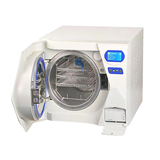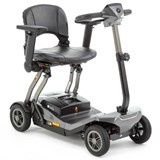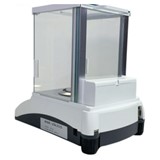Explore Australia’s top mobility scooter options, pricing, and essential buying tips to choose the perfect scooter for your lifestyle and budget.
Key takeaways
- Mobility scooters are growing in popularity, with over 230,000 Australians using them for personal transport.
- Prices range widely: Entry-level travel scooters start from $1,000, while heavy-duty, all-terrain models can exceed $7,000.
- Types include: Portable/travel, mid-size, heavy-duty, and enclosed cabin scooters.
- Speed and range vary: Most scooters offer speeds of 6–10 km/h, with ranges from 15 km to 50+ km.
- Running costs are minimal, with electric charging costing under $0.50 per full charge.
- Government subsidies may be available via the NDIS, DVA, or state-based mobility equipment schemes.
- Warranty coverage typically spans 12–24 months for new scooters.
- Australian compliance requirements: Scooters must meet road-related standards if used on public footpaths, including a max speed of 10 km/h and 250W power limit.
- Indoor vs. outdoor use: Match your scooter to its environment, compact models suit indoor manoeuvrability, while larger scooters with pneumatic tyres and higher ground clearance perform better outdoors.
- NDIS and aged care funding: Eligible Australians can access mobility scooters through NDIS or Home Care Packages, ensuring your supplier provides quotes and documentation aligned with approved funding guidelines.
Introduction: Why mobility scooters matter
As Australia's population ages and urban mobility evolves, mobility scooters have become a vital tool for independence. Whether you're buying for yourself or a loved one, selecting the right scooter can significantly impact quality of life. This guide breaks down everything you need to make an informed purchase from types and prices to compliance, warranties, and FAQs.
Types of mobility scooters
There are four main types of mobility scooters, each designed for specific needs and lifestyles:
1. Portable/travel scooters
- Lightweight and foldable.
- Ideal for short trips and transport in cars.
- Range: 10–20 km.
- Price: $1,000–$2,500.
2. Mid-size scooters
- Suitable for daily local use.
- Balance of portability and comfort.
- Range: 20–35 km.
- Price: $2,000–$4,000.
3. Heavy-duty/all-terrain scooters
- Larger wheels, stronger suspension.
- Designed for outdoor use, hills, or uneven surfaces.
- Range: 40–50+ km.
- Price: $4,000–$7,000+.
4. Enclosed cabin scooters
- Weatherproof cabin, windshield, and roof.
- Comfort-focused, often with lighting and storage.
- Range: 40–70 km.
- Price: $6,000–$10,000.
Key buying considerations
1. Comfort and ergonomics
- Test the seat height, width, padding, and armrest adjustability.
- Ensure posture support for long rides.
2. Terrain and usage
- Will you ride indoors, on footpaths, or across gravel?
- Choose wheels and suspension accordingly.
3. Portability
- If travelling by car or public transport, ensure it folds or disassembles easily.
4. Battery life and charging
- Look for lithium batteries with fast charging and long cycles.
- Battery range impacts independence.
5. Weight capacity
- Standard scooters support 100–160 kg.
- Bariatric models can handle up to 220 kg.
6. Turning radius
- Important for indoor use or narrow paths.
- Smaller scooters offer tighter turns.
7. Accessories and upgrades
- Add baskets, mirrors, canopies, USB ports, walking stick holders.
Prices and running costs
- Basic models: $1,000–$2,500.
- Mid-range: $2,500–$4,000.
- Premium heavy-duty: $4,000–$7,000.
- Cabin-style scooters: $6,000–$10,000.
Operating costs
- Charging cost per full cycle: ~$0.30–$0.50.
- Battery replacement: $300–$900 every 2–3 years.
- Tyres and maintenance: ~$100–$300/year.
Maintenance and servicing
- Monthly checks: Tyre pressure, brakes, lights, horn.
- Quarterly servicing: Battery testing, lubrication, electrical components.
- Annual check-up: Full inspection recommended.
- Many retailers offer service plans or mobile maintenance.
Parts and repairs
Common replaceable parts:
- Batteries
- Tyres and tubes
- Armrests and seats
- Controllers and wiring
- Headlights and taillights
Choose brands with strong Australian distributor networks to ensure parts availability.
Financing options
- NDIS: Covers eligible Australians under individual mobility plans.
- Department of Veterans' Affairs (DVA): Support for eligible veterans.
- Aged care packages: Funding through CHSP or HCP.
- Payment plans: Retailers often offer 6–24 month interest-free options.
- Consumer leases: Higher cost over time, but low upfront payments.
Warranty and return policies
- Standard warranties: 12–24 months for major components.
- Batteries are usually covered for 6–12 months.
- Check for home service callouts or pickup coverage.
- Return policies vary: Some allow 7–30 day return windows.
Australian compliance and certification
Mobility scooters in Australia are classified as motorised mobility devices and must comply with public-space requirements and local regulations to ensure safety and legal use:
- Speed limit: Maximum of 10 km/h on footpaths, shared paths and pedestrian zones.
- Registration: Not required federally. Most states (NSW, VIC, WA, TAS) do not mandate registration; Queensland offers voluntary registration under its personal mobility device scheme.
- Standards and testing: Seek ISO 7176 or EN 12184 compliance for build quality, battery safety, braking performance and electromagnetic compatibility. TGA listing offers additional medical device oversight.
- Footpath and path use: Riders must keep left, yield to pedestrians, and follow council bylaws for path sharing, parking restrictions and sidewalk widths (typically 1.5 m+).
- Safety features: Lights, reflectors, horn and mirror requirements vary by jurisdiction; ensure your model includes adequate visibility aids for dawn/dusk operation.
- Liability and insurance: While not mandatory, public liability insurance is strongly recommended to cover third-party injury or property damage.
- Accessibility compliance: Check local council guidelines for ramp gradients, curb cut-outs, and accessible parking bays to guarantee seamless travel.
Indoor vs. outdoor usage comparison
Choosing the right mobility scooter depends largely on where it will be used most, indoors, outdoors, or a combination of both. Here's how to decide:
- Indoor scooters are compact and lightweight with a tight turning radius. These are ideal for navigating inside homes, aged care facilities, shopping centres, and narrow hallways. Most feature smaller wheels and lower ground clearance, making them unsuitable for rough or uneven terrain.
- Outdoor scooters are designed for longer distances and rougher surfaces. They typically feature larger pneumatic tyres, better suspension, higher ground clearance, and enhanced weather resistance. Many models include ergonomic seating and longer battery ranges (up to 45 km), making them more comfortable for extended outdoor use.
Key tip: If the scooter will be used both indoors and outdoors, consider a mid-sized, all-rounder model. These offer moderate manoeuvrability indoors while still handling pavement and gentle outdoor gradients, common in suburban Australian environments.
NDIS and aged care package eligibility
If you or the scooter user has a disability or is an older adult receiving government-funded support, a mobility scooter may be fully or partially funded under Australian assistance schemes.
NDIS (National Disability Insurance Scheme)
Under the NDIS, mobility scooters are categorised as Assistive Technology (AT). Eligibility depends on:
- The scooter being related to a permanent disability.
- A professional AT assessment report from an occupational therapist or physiotherapist.
- Alignment with the participant’s NDIS plan goals (e.g. community access, independence).
Average funding timeframe: 2–6 weeks after submitting the assessment and quote, depending on the complexity and value tier of the scooter.
My Aged Care Home Care Packages (HCP)
For those on a government-funded HCP, mobility scooters can be purchased or hired through:
- Level 2–4 HCPs, where mobility and transport support is part of the approved care plan.
- Coordination with an aged care case manager to assess functional needs and ongoing service.
Note: Basic Commonwealth Home Support Programme (CHSP) recipients typically aren’t eligible for scooter purchases, these are usually limited to short-term equipment hire.
Pro tip: Many reputable scooter suppliers in Australia offer NDIS and My Aged Care invoice support, and some will even liaise with case managers to streamline the process.
Common questions from mobility scooter buyers
1. Do I need a licence to drive a mobility scooter in Australia?
No. You don’t need a driver’s licence, but you must be capable of safely operating the scooter.
2. Can I use my mobility scooter on the road?
Only when no footpath is available. Always keep to the side and obey pedestrian rules.
3. How long do mobility scooter batteries last?
Typically 18–36 months, depending on use, charging practices, and battery type.
4. Are mobility scooters covered by Medicare or NDIS?
NDIS: Yes, for eligible participants. Medicare: No direct rebate, but ask your GP about allied health pathways.
5. What’s the difference between a mobility scooter and a powered wheelchair?
Scooters are controlled with handlebars and best for outdoor use. Powered wheelchairs are joystick-operated and ideal for indoor manoeuvrability.
6. What terrain can I use a mobility scooter on?
Footpaths, paved areas, shopping centres, parks, and light gravel trails. Heavy-duty models handle steeper or uneven terrain.
Final thoughts: Making the right choice
A mobility scooter is a life-enhancing investment. Prioritise the user’s lifestyle, terrain, comfort needs, and available budget. Look for tried-and-tested models, reputable suppliers, and support coverage.
Whether you're choosing your first scooter or upgrading, use this guide to shortlist options that deliver the freedom, safety, and independence every rider deserves.















-160x160-state_article-rel-cat.png)





